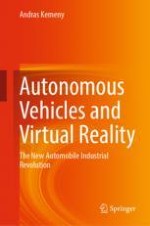2024 | OriginalPaper | Buchkapitel
2. Virtual and Augmented Reality
verfasst von : Andras Kemeny
Erschienen in: Autonomous Vehicles and Virtual Reality
Aktivieren Sie unsere intelligente Suche, um passende Fachinhalte oder Patente zu finden.
Wählen Sie Textabschnitte aus um mit Künstlicher Intelligenz passenden Patente zu finden. powered by
Markieren Sie Textabschnitte, um KI-gestützt weitere passende Inhalte zu finden. powered by
